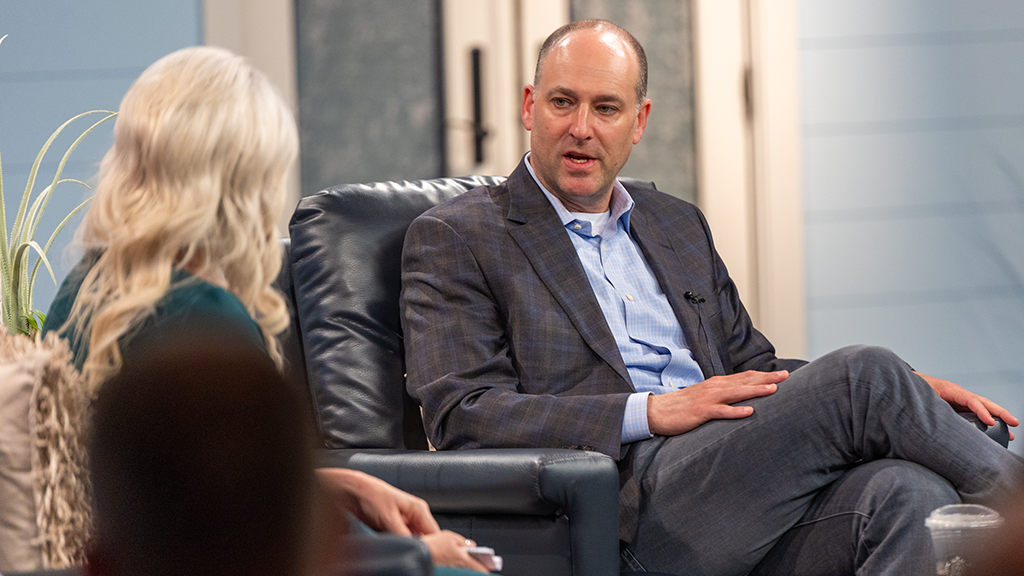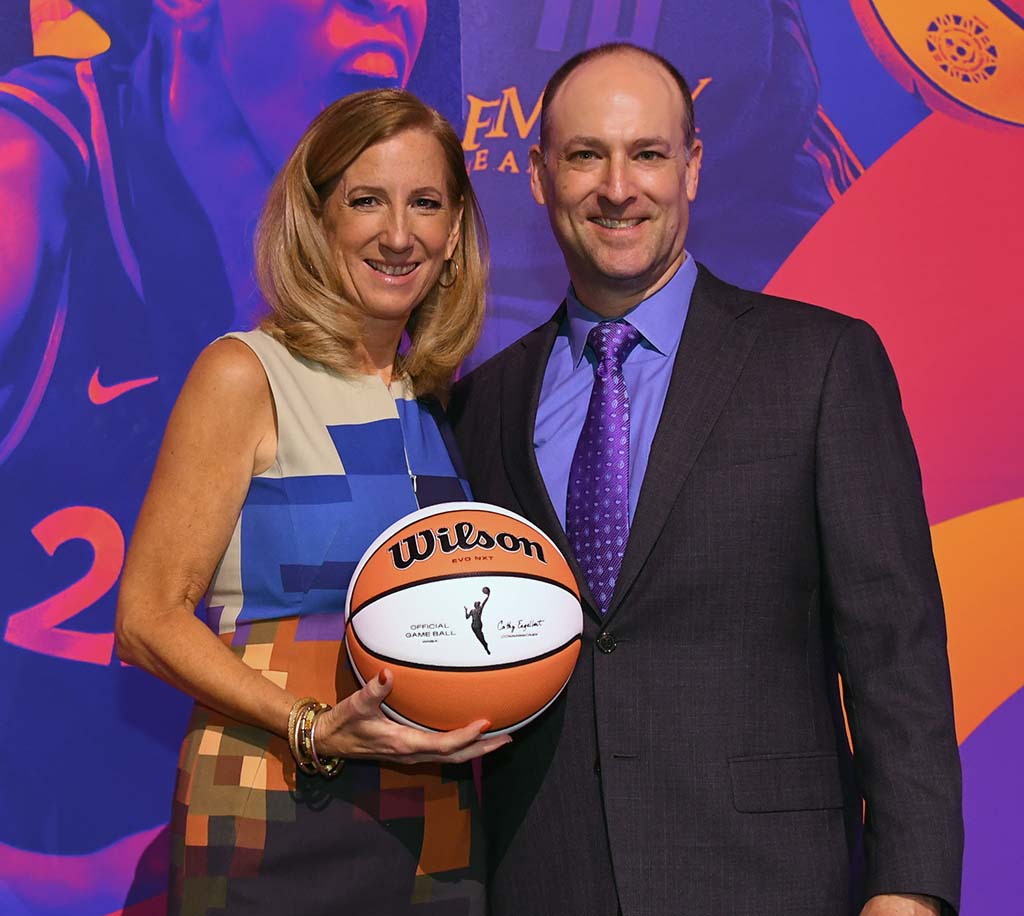
If you were going to pick a time to be the new CEO of a broadcast company, you might not have chosen 2017, amid cord-cutting, new streaming competition and the advertising slump that has been challenging for most media executives — not even counting the worldwide pandemic that was coming soon.

Station Group of the Year: CBS Stations
GM of the Year, Markets 1-25: Kyle Grimes, WCVB Boston
GM of the Year, Markets 26-50: Adam Chase, WTKR-WGNT Norfolk (Va.)
GM of the Year, Markets 51-Plus: Katie Pickman, KGMB-KHNL-KFVE Honolulu
News Director of the Year: Allison Smith, KCCI Des Moines (Iowa)
Multiplatform Broadcaster of the Year: Tegna
Unsung Hero of the Year: Phil Brooks, KRIS Corpus Christi (Tex.)
News Anchor of the Year: David Ono, KABC Los Angeles
Meteorologist of the Year: Pete Delkus, WFAA Dallas
Sports Anchor of the Year: Héctor Lozano, WSNS Chicago
Those were the conditions, though, when venerable E.W. Scripps Co. named 41-year-old Adam Symson as its new CEO. Kim Williams, board chair at Scripps, said Symson was the right choice and has since helped the company navigate through the turbulence by taking the Cincinnati-based station group owner into new businesses, including national networks and live sports.
Williams said Symson, named the B+C Broadcaster of the Year, has “the ability to have a vision for the future, the ability to identify trends early and to position the company so that we can create value with our existing assets.”
The CEO also has been able to “determine where there might be additional value we can create by adding assets to the portfolio,” Williams said. She pointed to Scripps’s 2020 acquisition of Ion Media for $2.65 billion as a deal “many people wouldn’t have undertaken, given the level of uncertainty that we were in during the pandemic.”
The deal doubled down on Scripps’s spectrum, brought the company a national platform and set the foundation for what has emerged as a sports strategy, Williams told B+C.
Corporate strategy is not necessarily what one might have foreseen for Symson when he started out as an investigative producer at TV stations in Chicago and Los Angeles, before joining KNXV, Scripps’s station in Phoenix, as executive producer of investigations and special projects.
At KCBS Los Angeles, he produced a story, “Behind the Kitchen Door,” that used an undercover camera to show the conditions in restaurants and led to restaurant inspections being revamped, first in California and then nationally.
Despite that impact, Symson said he became “very disenchanted” with L.A. news and looked to take his investigative skills to the FBI. He passed the physical fitness test but chose not to take the job. Instead, he ran Scripps’s digital businesses until moving into the corner office.
While most top executives are schooled in finance or the law, the creative and problem-solving skills involved in investigative journalism are valuable to a CEO, Symson said.
“One of the things that I didn’t realize before I got this job was how much of my time was going to be spent on communication,” Symson said. “So in that way, being a journalist actually prepared me well to understand how to articulate our story so people understand where we’re going.”
Like on TV, sometimes the news isn’t good. Since January, the company has been undergoing a reorganization that has led to layoffs.
“The business is under revenue pressure, so we’ve got to be a little bit leaner,” Symson said. “We’ve got to be more effective in executing our strategy. It’s been a time of incredible change at Scripps. We have transformed several times over and I recognize that that’s been difficult on our employees.”
Making a Media Company
One goal of the reorganization is to transform Scripps from a holding company of brands into a media firm. “We’ve got to become a media company in the minds of the American consumer and the American advertiser,” Symson said.
I have become a believer in the necessity to have scale in a marketplace like this, and the acquisition of Ion was transformational.”
— Adam Symson
Under Symson, Scripps has been leaning into linear television, particularly over-the-air broadcasting. Buying Ion, with its national footprint, gave Scripps more stations, more spectrum and more coverage.
“I have become a believer in the necessity to have scale in a marketplace like this and the acquisition of Ion was transformational,” Symson said. “It opened up so many options for our company.”
The key opportunities for Scripps were in sports and news.
“Sports and live news are two of the most durable and important genres for the future of linear television,” he said. “And if we wanted to make sure that our brands and our platforms were going to retain their relevancy, we’re going to need to make sure that we were a significant player in sports.”
Scripps established a sports unit and made a deal to put WNBA basketball games on Ion on Friday nights. With regional sports networks melting down, Scripps stations arranged to broadcast games locally for a pair of NHL teams, the Stanley Cup champion Las Vegas Golden Knights and the Arizona Coyotes. Scripps followed up by getting Ion a package of Saturday-night National Women’s Soccer League games.
Ahead of the Curve on Sports
Among broadcasters, Symson was ahead of the curve in targeting the sports opportunity.
“He read the data before the rest of us, honestly before the leagues did,” said Hillary Mandel, executive VP, head of Americas, IMG, who negotiated for the NWSL. “They didn’t want to believe that model for local sports was falling apart.”
While new to sports, Symson was no rookie in the business of television, Mandel added.
“They are more than a local station group there,” she said. “This is an established company with real expertise in all of the divisions that matter.”

On top of that, Symson has been hands-on in tackling sports. “It takes a certain tenacity and he brings a personal commitment to the table,” Mandel said.
Symson said he’s not the kind of sports fan who can rattle off statistics. He roots for his alma mater, UCLA, and for Cincinnati’s teams.
“I don’t play fantasy sports,” he said. “I don’t do sports betting. But I do spend every Sunday on the couch with my daughter watching the Bengals game.” A bigger thrill was taking one of his two daughters to Super Bowl LVI in Los Angeles, when the Bengals played the Rams.
Of course, journalism remains a preoccupation for Symson.
“Folks inside Scripps know for better or for worse that if they send me a script, I will mark it up and send it back to them,” he said.
On a more fundamental level, Symson said he considers democracy a stakeholder, along with the Scripps family, shareholders, employees and audiences.
Scripps this year rebranded Newsy as Scripps News, a free over-the-air news network that contributes content to Scripps’s local stations. Symson also announced a $10 million investment in increasing journalists’ salaries and hiring up to 250 newsroom staffers over the next year.
“The way we are approaching local journalism is all about future-proofing the approach and making sure that we get ahead of some of the pressures we see in the marketplace and create a really durable model for a better level of quality journalism in those markets,” he said. “Cutting your way to existence — or even cutting yourself out of existence, as we’re starting to see in some markets — is not the Scripps way.”

Ray Hopkins, president of U.S. Networks Distribution at Paramount, observed that Scripps has always taken a lot of pride in its local journalism.
“The name Scripps is synonymous with quality,” he said. “They are a great partner within their communities and CBS is proud to be associated with them.”
Hopkins, who deals with station groups, added that Symson has been both innovative and contrarian.“He’s trying to figure out how to navigate this crazy business. He’s not looking to manage loss. He is looking to grow.”
Symson also spends a lot of time as a director of the Reporters Committee for Freedom of the Press, according to the group’s chairman, Steve Adler.
“He has a clear commitment to press freedom and to local journalism,” Adler said. “We have a lot of lawyers on the board and a lot of journalists. We don’t have as many people who really understand business. He’s been incredibly useful.”
Debt Overhang
Speaking of business, Scripps stock traded at about $16 a share when Symson became CEO, but now trades at less than $8, weighed down by corporate debt.
Wells Fargo analyst Steven Cahall rates Scripps stock “equal weight.” In a recent report, Cahall said: “Local sports are set to add growth at Scripps, while [advertising at its national] networks face pressure. We still think the free-to-air focus could be compelling if leverage comes down.”
“Our business is on a really firm financial footing,” Symson said. “We generate significant free cash flow and the moves we are making are putting the company onto a growth trajectory. I think the stock price ultimately should take care of itself.”
Williams, the Scripps chairman, is also bullish.
“We have opportunities in datacasting and there are two generations now who don’t actually know you can get free TV, so introducing the notion of over-the-air television and the launch of the new Tablo digital video recorder are very exciting for us,” she said.
As for Symson, she said, “I expect him not to be standing still.”







